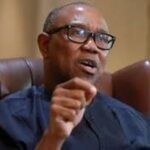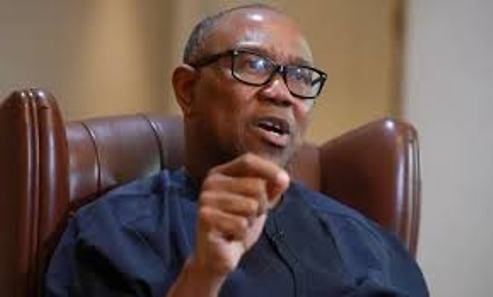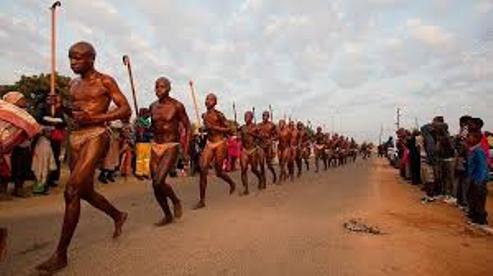
LAGOS JUNE 7TH (NEWSRANGERS)-Thousands of artifacts looted from African towns over a century ago line European and British Museums and institutions. After decades of campaigns for African pieces—such as the Benin bronzes to return home, the homecoming of the looted artworks finally began looking like a real possibility.
But in the middle of the global economic crisis brought sparked by the spread of the coronavirus that has devastated economies, a new market for African artifacts and art has emerged.
Christie’s, the British auction house, announced a curated “Arts of Africa, Oceania and North America” sale in Paris which includes African art such as the newly discovered Akan terracotta head (Ghana), Benin Bronze and an Urhobo figure (Nigeria). The artifacts from all around Africa including Nigeria, Ghana, Gabon and the Democratic Republic of Congo are valued from €30,000 to €900,000.
The Christie’s auction is embroiled in controversy. Christie’s can only guarantee the origin of the Bronze head as far back as 1890-1949 as a part of the Frederick Wolff-Knize collection that was shown in Vienna and New York.
Christie’s did not respond to a request for comment.
The Benin Bronze plaques that are offered by Christie’s are very similar to Bronze plaques from the St Petersburg and Berlin Museums; artworks with a well-documented history as part of looted artifacts from the Royal Court in the invasion of Benin City in 1897.
Sotheby’s, the storied British-founded American auction house on the May 27 announced an ambitious sale of “The Clyman Fang Head,” a statue with an estimated value of between $2.5 million and $4 million from the collection of Sidney and Bernice Clyman. A total of 32 African artworks from the collection will be offered across a series of auctions at Sotheby’s.
Auctions of valuable African artifacts, some of which could be identified as candidates for repatriation to their lands of origin by activists, would be controversial in normal times but particularly so during the ongoing global pandemic and its attendant economic fallout.
Both Sotheby’s and Christie’s have moved auctions online for this reason. Sotheby’s said in March it has seen an expansion of interest in African art auctions with a more diverse customer base online.
French report
Some might have assumed auctions like these ones might dwindle after a high-profile report by Senegalese writer/economist Felwine Sarr and French historian Bénédicte Savoy called for thousands of African artworks in French museums taken during the colonial period to be returned to the continent.
The report commissioned by French president Emmanuel Macron called for a change in French law to allow the restitution of cultural works to Africa. In a meeting with students in Burkina Faso in 2017 Macron said “Africa’s heritage must be showcased in Paris—but also in Dakar, in Lagos, in Cotonou. This will be one of my priorities. Starting today, and over the next five years, I want to move toward allowing for the temporary or definitive restitution of African cultural heritage to Africa.”
Plenty of African art is domiciled outside the continent, including statues and thrones with hundreds of thousands of historical artifacts housed in Belgium, the UK, Austria and Germany. The French report estimates the British Museum alone has a collection of around 69,000 works from Africa.
“Most of the artworks are already a part of global art conversation and the global economy and it needs to continue to do so,” says Kola Tubosun a Nigerian linguist and Chevening research fellow at the British Library. “Many of them [artworks] influenced the way art was discussed in Europe in those days. They present opportunities to celebrate global and not only African development.”
In 1897, British troops destroyed a large portion of Benin, a city in southern Nigeria burning the palace to the ground and looting 4,000 works of art including the famous Benin brass heads and bronzes. Today, the British Museum in London has about 700 Nigerian historical artifacts with around 100 of them displayed in an underground gallery.
As the global clamor for repatriation of African artifacts, including Benin’s, have come to the limelight, the British Museum has announced plans to “lend” some of the artworks to a proposed new museum in Benin City billed to open in 2021.
A part of the report stated that unless it could be proven that objects were obtained legitimately, they should be returned to Africa permanently, not on long-term loan. But one of the major criticisms of demands for the returns of artworks back to African countries especially Nigeria has been the general absence of museums and a proper maintenance culture.
While a few galleries and art shows are acting as custodians for African art in Nigeria, the older museums in the country are decrepit and generally underfunded. New museums are springing up in Africa, including Dakar, Senegal’s Museum of Black Civilizations and Lagos’ Yemisi Shyllon Museum of Art. But the museums are not enough.
The demand for the return of a lot of the artifacts has not only been sentimental. A few of the artifacts and art pieces are religious monuments and represent a dying segment of African culture. “Many of the taken works have ritual significance from the places they are taken,” says Tubosun. “When the owners of the art insist they want them [artworks] back in those places, it is their right to do so. But the ownership needs to be established.”
But the artifacts are already a part of a global ecosystem that is seemingly moving on without Africa. For Prince Yemisi Shyllon, a Nigerian art collector, the value ascribed to many artifacts taken from Africa exist because of their current location.
“There is a working industry and infrastructure to support the works of art. The moment those works come back to our control, they will lose value just like the ones that are here. The conversation moving forward should be to claim ownership and then claim annual royalties to these works of art even as they remain where they are,” says Shyllon.
Prince Shyllon believes that the Nigerian ecosystem for art isn’t where it should be yet especially as local attitudes towards historical artifacts are very often demonized.The museum named for him has been touted as a potential home for any African art pieces coming back home.
Quartz Africa










